When I was around 18 or 19, my mother, Barbara, was diagnosed with multiple sclerosis. As you can imagine, this was a shock to us all, and her mostly.
It was shocking in part because it was my mom, but even more so because of what type of mom she is. She’s the cool mom. The one your sister’s friends love to hang out with and call “Barb” or “Barbie,” and go with on shopping sprees.
She also helped us (read: did) all of our projects in school until the age of probably 15 – no I’m not kidding. One night, I hadn’t started on my project due the next day, and I was crying. But again, she came in and saved the day. I am pretty sure I (we) … (she) kept up “our” GPA of about 4.0+ at that point.
So how could this happen to her? My mom? Barbie? The YouTube Yoga Sunsation?!? It didn’t seem right, or 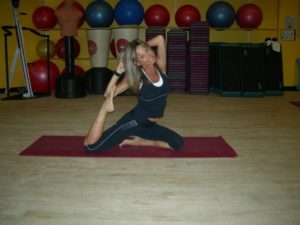 possible.
possible.
I also had no idea what MS was or what to do about it.
Well, except for gather people for a walk.
During my freshman year, I sent out an email to my newly joined fraternity (yea, that’s right, I was a frat dude – deal with it), trying to bring attention to the walk, asking for donations, and help.
I was pleasantly surprised with how many people responded and showed up to the walk. We were one bad ass group of yellow-“Barbie’s Dolls”-shirt-wearin’ walkers! It was a lot of fun.
But what happened after the walk?
***
So often the big event or 5K will get people to gather and think about the cause for a few minutes and hopefully donate some money to research. But then it’s tomorrow.
We’ll laugh at Dan Tosh’s jokes about them, or chuckle as we watch Kramer refuse to put on a ribbon at the AIDS walk in Seinfeld. And, don’t get me wrong, these bits of humor, I think, are also helpful. (And so does some research).
But it also may miss the mark. Because it doesn’t seem to beget true awareness AND action.
And we think there is now way it could happen to us or our families or friends. But, as is plainly obvious, it can.
A year or so after the MS walk, I walked at 5K for a fellow friend of ours for breast cancer. And much like the MS walk, my friend rallied some buddies together, and we were there to support him and donate to the cause.
But I didn’t know anything about the cause. I doubt many of us did. I wasn’t aware of the impact or what I could do about it.
And, yet, there does seem to be something we can do…
The Impact and Status Quo
In 2017, it is estimated that more than 250,000 women will be diagnosed with breast cancer in the United States alone. An unfathomable number.
That’s like the population of Ann Arbor, or Daytona Beach, or Lexington, KY. It’s nearly the size of Iceland.
One out of every eight women with be diagnosed with breast cancer in their lives. So think of eight random female friends you have (male cases in the US are rarer at about 2500 per year). One of them is likely to get breast cancer.
Sorry to be so indiscreet, but I think we need to know the facts.
One answer might be to increase the number of early detection systems like mammograms. But we know from Malcolm Gladwell’s 2004 New Yorker piece that this method is, unfortunately, not exactly full-proof. And Gladwell’s recent follow up on the subject doesn’t do much improve our outlook via the current western medicine practice.
[Update: my friend Libby Pier, the brains behind the Scribe, a weekly newsletter distilling and quite humorously presenting the latest research or body, brain, earth and universe, pointed out this study, from just last week, which gives breast cancer diagnoses some hope!]Fighting Breast Cancer With Food?
The above information, may cause one to feel helpless, or, worse, hopeless. But it seems there are things we can do right now, for ourselves and others.
According to the World Health Organization, 85% of all breast cancer diagnoses are from something other than heredity. The rest are caused by genetic mutations that occur in one’s life.
Researcher and Public Interfacer, and all-together nutrition hero, Dr. Rhonda Patrick, has explained to us that our lifestyle can impact our genetic code in real-time through a mechanism called epigenetics. Which means we can do something to dramatically reduce this horrible disease.
According to the World Health Organization:
“The contribution of various modifiable risk factors, excluding reproductive factors, to the overall breast cancer burden has been calculated by Danaei et al. (Danaei et al., 2005). They conclude that 21% of all breast cancer deaths worldwide are attributable to alcohol use, overweight and obesity, and physical inactivity.”
In other words, we may be able to save hundreds of thousands of lives each year, by merely eating a bit more green-light, and a bit less red.
What The Research And Dr. Michael Greger Say About What Foods Help (Or Hurt) The Most
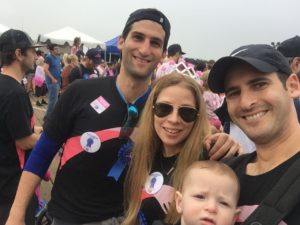
Today I am walked for Breast Cancer with my very good and do-good friend, Rebecca “Bex” Rothstein. I think it is a 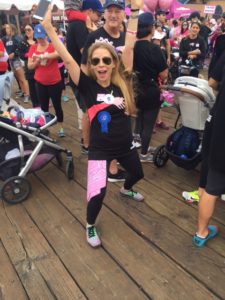 great cause and I am so glad she was able to rally the troops for a big reminder about what’s important. She’s already raised over $7,000 dollars! [You can donate here].
great cause and I am so glad she was able to rally the troops for a big reminder about what’s important. She’s already raised over $7,000 dollars! [You can donate here].
So, another walk for a good cause and some money raised.
But this time, I am going to try to actually act. And hopefully, I can influence you to act. Even just for yourself. Or your kid. Or your sister. Or your mom.
For about a year, I was volunteering for a phenomenal website called Nutritionfacts.org. It is a totally nonprofit website by one of my favorite long-term, sustainable, healthy-eating advocates, Dr. Michael Greger. [Be careful with that site, Lieutenant, in time you may develop into what Jerry calls, “A Healthy Person.”]
Among other things, Dr. Greger is a world-renowned speaker, a recent mega-best-selling author, and a hilarious and endlessly informative video-maker. I also rely on him heavily for much of my “Intelligent Eater” research and basically lifted his “Traffic Light System.”
So how does Dr. Greger get his information? Does he rely, like most doctors, on anecdotal “success” stories from his patients? No, sir.
Dr. Greger does the unfathomable. Every year there are more than 100,000 papers filed in peer-reviewed scientific and medical journals relevant to nutrition research. Dr. Greger and his massive army of volunteers and employees, painstakingly sifts through as many of those papers as they can in order to bring to light the actual science on nutrition and long-term health. Quite an amazing gift.
Oh, and by the way, unlike nearly everyone else in the business of nutrition advocacy, Dr. Greger doesn’t have a line a products he’s looking to stuff down your throat. He didn’t even earn money off of his mega-best-selling book: How Not to Die.
Besides being one of, if not the, best books I’ve read on nutrition, this book has also raised millions of dollars for charities aligned with the cause – as, true to form and purpose, Dr. Greger donated all earnings.
I believe he does the same thing with his speaking tour earnings – either donating them or putting them back into the platform to give out more information.
Anyway, as a volunteer, my job was to write about 500 words on a topic. I would use the Nutritionfacts.org site to gather relevant videos and information on the subject, which are all made based directly on the newest science available.
One of my topics was breast cancer. I thought in the spirit of what Bex is doing today for the cause, I would try and help by spreading awareness about what you can do with your diet in order to dramatically lower your chances of receiving this horrible diagnosis.
Indeed, some of the research even shows a possible mitigation, inhibition, or even REVERSAL of the cancer’s progress. Take a look, and eat some green-light foods today for your breasts, I mean health (sorry, little humorous boob never hurt anyone, I mean joke).
For more reading / watching, the great Dr. Rhonda Patrick has discussed how “Time-Restricted Eating” can also fight breast cancer. More on that subject in a later post.
[NOTE: The version I am pasting below is my original version before it was edited by the other great volunteers and employees at NF. So, it is possible that some things are either (a) not what they would say or (b) exactly accurate. But more or less, this is the version they used, and I believe it all to be accurate.]
If it so inspires you, share this or post this or tweet it or flickr it or whatever it is you kids do today to spread the message, raise some money, and lower the incidences of this largely preventable disease.
***
[Again, this is the pre-edited version. All the links below are to specific videos on Nutritionfacts.org]
Breast Cancer and Survival
One out of every eight women will be diagnosed with breast cancer in their lifetime. And yet, it seems to be largely preventable by way of a healthy diet and lifestyle.
Researchers created a “healthy lifestyle index” whereby women who checked off certain boxes: (1) avoiding tobacco, (2) avoiding alcohol, (3) daily exercise and (4) a plant-based diet cut their breast cancer odds by 80%.
Similarly, women already diagnosed with breast cancer quadrupled their chances of survival.
Yes, other strategies seem to reduce breast cancer risk by up to 60% such as removal of ovaries or using the drug tamoxifen – but not without severe side-effects such as uterine cancer and blood clots.
That’s why less toxic, even safe, breast cancer preventive strategies such as daily consumption of a plant-based diet including fiber, flax, soy and cruciferous vegetables and decreasing cholesterol levels and consumption of methionine-containing animal products and alcohol might be a better way to go.
Cholestrol and Breast Cancer Survival
Cancer feeds on cholesterol. Transformed cells take up LDL and are capable of stimulating the growth of human breast cancer cells. This appears worse in breast tumors with higher levels of LDL receptors.
Recently, researchers found reduced breast cancer risk associated with higher consumption of sunflower and pumpkin seeds. This is likely due to phytosterols in the seeds that have been shown to lower cholesterol levels in the blood.
Alcohol and Breast Cancer Survival
The slightest bit of alcohol increases cancer risk. However, the Harvard Women’s Health Study showed almost no increased risk from moderate red wine consumption. Why?
The grape skin in red wine (not white) may suppress the proliferation of aromatase—the enzyme used by breast tumors to produce their own estrogen, and thus grow.
To get the good without the bad – just eat the whole red grape (especially seeded grapes) and avoid the alcohol.
Methionine and Breast Cancer Survival
To fight tumor cells we need to be able to combat something they have that non-cancerous cells do not have. One thing that may be is a dependence on methionine – the amino acid.
I seems that starving the body (and tumor) of methionine by avoiding foods particularly high in methionine such as meat (especially chicken and fish), eggs and dairy may help stifle tumor growth.
Soy and Breast Cancer Survival
Multiple studies have shown reduced morality and reoccurrence by eating soy. Specifically, a 29% lower risk of dying from breast cancer and a 36% lower risk of cancer recurrence.
With an average intake of soy phytonutrients above 17 mg/day, about a cup of soy milk, the mortality of breast cancer may be reduced by as much as 38%.
How? Cancer works in part by turning off BRCA genes – genes responsible for DNA repair. These BRCA genes are called oncosuppresors (tumor suppressors) and cancer turns them off in a process called methylation.
When researchers introduced soy phytonutrients to breast cancer tumors – the equivalent to about a cup of soybeans – the BRCA genes were turned back on, ramping up DNA repair.
This suggests soy phytonutrients might reverse DNA hypermethylation and restore the expression of the tumor suppressor genes BRCA1 and BRCA2. And, it may help with other breast cancer genes as well. Women at increased genetic risk of breast cancer may especially benefit from high soy intake.
Breast Cancer Survival and Cruciferous Vegetables
Studies have shown that less than a single serving a day of cruciferous veggies may cut the risk of cancer progression or reoccurrence by more than half.
Fiber and Breast Cancer Survival
In the largest associative studies to date, women who ate the highest amount of fiber had up to 85% lower odds of breast cancer. Breast cancer risk was 15% lower per 20/grams of fiber consumed per day.
Further, a more reliable meta-analysis of cohort studies showed that every 10 g/day of increased fiber consumption resulted in a 7% reduced risk of breast cancer.
Flax and Breast Cancer Survival
Epidemiological studies in the US, Italy and Germany, including the largest study to date, have shown a decreased risk of breast cancer correlated with higher serum lignans levels.
Flax seed has by far the highest concentration of linigans – up to 800 times higher than a dozen other plant foods (the only whole-food sources of linigans).
A review of those studies comparing 3000 women with breast cancer to 3000 women without found that consumption of flax alone correlated with a 20-30% reduction in breast cancer risk.
Further, a recent randomized, double-blind, placebo-controlled clinical trial of flax seeds in breast cancer patients found that flax appears to have the potential to reduce human breast tumor growth in just a matter of weeks. The flax group saw, on average, their tumor cell proliferation go down; cancer cell death go up; and their c-erbB2 score go down—which is a marker of cancer aggressiveness, and potential for forming metastases and spreading.
***
Recently, my mom, now with two diseases (here’s her article on being diagnosed with Parkinson’s Disease), started changing the way she eats. She started to eat many more green light foods and many less red.
And wouldn’t you know it, her symptoms showed some signs of improvement. (More on the research behind what to eat for Parkinson’s and MS to come soon.)
And now, at the young age of 63, and over a decade of neurological challenges, she looks like this (Barb, forgive me!):

Not too bad, huh? Fellas, keep your hands to yourselves! (Sorry, no guarantees that any amount of green-light food will get you to look that good).
Until next time, here’s to eating our way to a cure.
Besos,
Justin
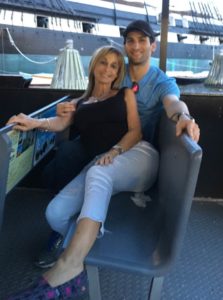
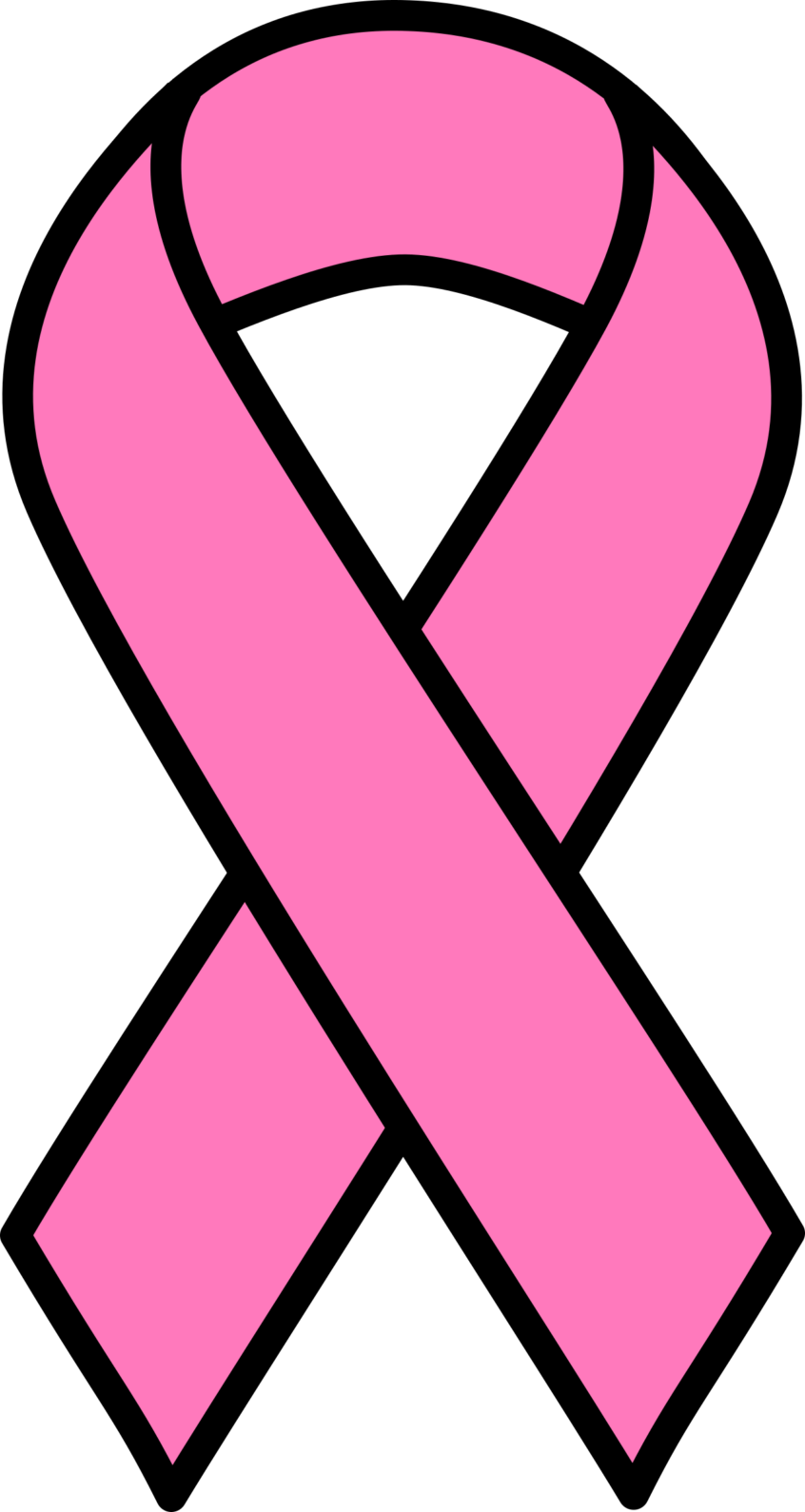
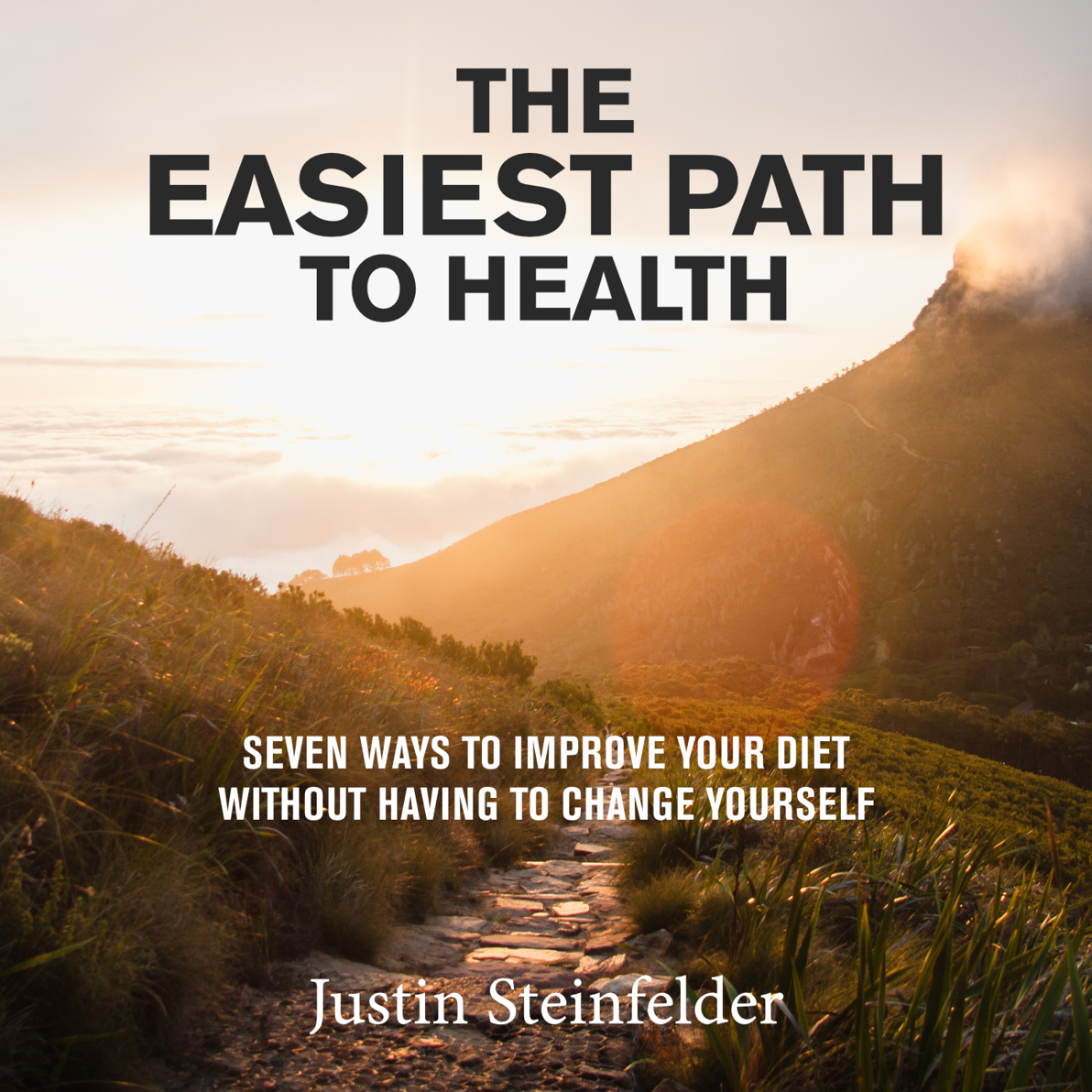

One Comment on “Eating Breast Cancer Away: The Research On How Food Can Help (Or Win) The Fight”
Well done!